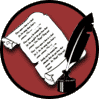%%USERNAME%% %%ACCWORDS%% %%ONOFF%% |
 |
Multiple large bodies have been detected heading towards Earth, we send teams to stop them |
| In 2025, humanity faced a cosmic threat: a barrage of asteroids, hurled toward Earth by an alien civilization wary of our burgeoning technology. The first wave, due in 18 months, prompted a global coalition to dispatch dozens of teams to intercept the largest, a 2-km-wide behemoth dubbed Tartarus. Among them was the Patel-Sullivan clan, a tight-knit family of engineers, botanists, doctors, and their children, entrusted with a nuclear-powered rocket, a mining rig, and 1500 tons of supplies—everything from hydroponic systems to advanced 3D printers, as per their request. The coalition’s primary plan was straightforward: attach rockets to Tartarus and nudge it off its collision course. But the Patel-Sullivans, given leeway to innovate, had grander ambitions. Their rocket’s nuclear reactor, a cutting-edge design, powered a mining rig that chewed through Tartarus’s surface, spitting out chunks of rock and metal. As the rig worked, the family’s engineers—led by Aisha Patel, a fusion specialist—noticed something extraordinary: the asteroid was rich in thorium, a potent nuclear fuel. “We’ve got a goldmine here,” Aisha said, her eyes gleaming over the spectrometer readouts. “Enough thorium to power a city—or something bigger.” The family devised a radical plan. Instead of merely redirecting Tartarus, they’d transform it. Using the rocket’s reactor to melt the mined asteroid material, they forged a massive, hollow cylinder—an O’Neill cylinder, a rotating space habitat envisioned decades ago. The mining rig’s output was reshaped into a 1-km-long, 300-meter-wide shell, reinforced with carbon composites from their supply cache. The family’s botanists, led by Dr. Liam Sullivan, designed an interior ecosystem, though their 1500 tons of resources filled only 5% of the cylinder’s vast interior with soil, plants, and basic life support. “We need water and gases,” Liam noted, scanning the empty expanse. “Saturn’s system has what we need—methane, water ice, nitrogen.” The cylinder, dubbed Aurora, was equipped with a thorium reactor Aisha’s team built from the asteroid’s bounty. This reactor, far more efficient than their rocket’s original, powered Aurora’s propulsion and life support. By July 2027, the Patel-Sullivans had not only neutralized Tartarus’s threat but created the first human space habitat. They broadcast their success to Earth, inviting other teams to replicate their design. The second team to succeed, the Nakamura-Liu group, took a different approach. Their asteroid, rich in carbon, was transformed into a massive solar sail, its surface coated with carbon nanotubes and embedded with magnetic field generators, creating a dual-purpose solar-magnetic sail. Their creation, Helios, captured sunlight and solar wind to maneuver with elegance, neutralizing its target’s threat without rockets. Inspired, the Patel-Sullivans contacted the Nakamura-Liu team. “Join us,” Aisha proposed. “Your sail tech could supercharge Aurora.” The teams merged, integrating Helios’s sails onto Aurora’s exterior. The combined vessel, now a hybrid of spinning habitat and solar-magnetic propulsion, became a marvel of human ingenuity. With Aurora complete, the joint team set course for Saturn in late 2027. There, they harvested methane from Titan to fill their fuel tanks, mined water ice from Enceladus, and extracted nitrogen from Titan’s atmosphere to pressurize Aurora’s interior and backup tanks embedded in the cylinder’s skin. By 2029, Aurora was a self-sustaining world, its 5% cultivated interior blooming with crops and forests, supporting the families and their new allies. Rather than return to Earth, the team looked outward. Aurora’s sails, catching sunlight and solar wind, allowed it to orbit the Sun repeatedly, slingshotting to gain velocity. By 2035, after dozens of solar orbits, Aurora reached a speed sufficient to embark on an interstellar journey. The families, now a community of 200, set their sights on Alpha Centauri, carrying humanity’s first off-world colony toward a new star. Back on Earth, their open-source designs sparked a wave of O’Neill cylinders and solar sails among other teams tackling the alien-thrown asteroids. The Patel-Sullivan-Nakamura-Liu coalition had not only saved Earth but pioneered a path to the stars, proving humanity’s resilience against cosmic threats. |